
글. Tim Parkinson
나이키(글로벌 광고 디렉터), 엄브로(CMO), 언더아머(크리에이티브디렉터) 등 글로벌 스포츠마케팅 분야에서 30년 이상 종사했다. 2020년부터 런던대 버벡칼리지 강사 겸 스포츠브랜드 컨설팅 회사 <스토리텔러스> 파트너 근무 중.
역. 홍재민
축구 전문 매체 <스포탈코리아>를 거쳐 <포포투>의 편집장을 역임했다. <한국인 프리미어리거 영웅전>을 썼고, <누구보다 축구 전문가가 되고 싶다> <스티븐 제라드> 등을 번역했으며, 손흥민 자전 에세이 <축구를 하며 생각한 것들>을 정리했다.
현재 페이지에 실린 원고는 독자들의 편의를 위해 번역 및 일부 의역하였습니다. 원문을 보고 싶으시면 [원문보기]를 눌러주세요.
Last year, a <Morning Consult> research report concluded: “Reaching Gen Z should be a point of concern for every single senior sports executive across teams, leagues, media companies, federations, brands, you name it. If you're a key stakeholder in the industry, this is probably something that you should be focusing on1.” They were probably understating the case. For those involved in professional sports, a failure to change and meet the demands of “Zoomers” could present an existential threat.
Gen Z. They’re already here. With a different vocabulary, symbols, rituals and aesthetic choices. It’s a group like no other before it. Digital natives, they have grown up with the notion of being constantly perceived and evaluated – whether in cyberspace or on the street – and therefore the needs to express an identity are paramount, whether online or offline.
Crafting identity requires the right cultural expressions, and no sphere is as rich in them as sport—overflowing with recognizable icons, universally shared moments at scale, and a constant stream of emotionally charged stories that can be shared, reinterpreted, and re-told. These narratives help people articulate who they are, what they stand for, and how they want to be perceived. As Douglas Holt, former head of marketing at Oxford University, has observed, Gen Z approach life as a “Personal Identity Project,” relentlessly optimizing and curating every aspect of their lives for public presentation.
Born between 1997 and 2010, it’s a cohort that already represents 25% of the global population and will control US$12 trillion worth of consumer spending power by 2030. Gen Z is a juggernaut that is beginning to rip through the world of sport, changing the way sport is played, consumed and enjoyed.
Now, the impact is being felt daily by those who govern, participate and/or support sport. Clubs and federations are slowly stumbling to meet a new relationship dynamic. The media is frantically trying to calibrate to the generation’s new desires and consumption behaviours. Brands, to varying degrees of effectiveness, are making Gen Z the center of their marketing activations. Stakeholders in finance, infrastructure and community are scrambling to understand the implications of the new demands.
Before we go further, let's address the elephant in the room: the misconception that Gen Z doesn't engage with sport. They’re too busy taking selfies and listening to K-Pop. The fact is Gen Z is producing the most diverse, gender-balanced, engaged and invested sports community in history. They are watching more sport than any previous generation, according to research by US consultancy <Two Circles>. Their analysis revealed Gen Z sports fans follow more sports than older generations. On average, 4.7 sports compared to 2.3 for the average Boomer (born 1946-1964) sports fan. More than double.
World Cup in Qatar both attracted around 65% of the global Gen Z population, the Paris Olympics, an even higher share. In the UK, 73% of Gen Z work out at least twice a week. A third global running boom is being driven by Gen Z. Especially by young women. In the UK, over 1.1 million people entered the 2026 London Marathon ballot, nearly double two years prior, with participants aged 18–29 comprising more than one-third of entries. It's not just running that’s booming.
The Gen Z response to the constraints and mental health challenges of Covid has been to embrace the outdoors. Climbing, trail running, hiking and water sports have seen participation rates skyrocket, driven by a generation of young men and women who are finding serenity and spirituality in the great outdoors. In China, it is estimated the population that engages in outdoor sports is now close to 500 million.
New global powerhouse brands, built around expectations for Gen Z consumers are emerging from outside the traditional European homesteads for outdoor brands. Kailas from China, Kolon from Korea, On from Switzerland and Goldwin from Japan understand the storytelling, aesthetic and social needs of the Gen Z consumers and are challenging the legacy brands.
What distinguishes the winning brands is their connection to history, culture, society and, in particular, an understanding of the identity needs of the Generation. Horizon Media Research claims 91% of 18- 25-year-olds believe mainstream pop culture is a thing of the past. The internet means even those with the most niche interests can find a like-minded tribe.
Sport subcultures appeal to Gen Z as they provide differentiated identity from the mainstream and allow them to distinguish themselves from prevailing orthodoxies and stand out. Sports subcultures are the readiest and best tool for identity creation amongst the Gen Z audience.
It is brands with a visible and meaningful subcultural commitment that are kicking ass. The sportswear behemoths of Nike, Adidas and Under Armour are struggling to meet the audience demands of authenticity within subcultures, mainly due to their multi-sports profile. The winners are focused and vertical, presenting their brand as authentic sub-cultural expression. They have meaning. They help Gen Z communicate their values and their differentiation. They offer belonging, a sense of community built around shared purpose.
Gen Z is looking beyond product-centric functional or technical excellence you may possess; they want to know who you are, what you represent, what you stand for and whether you are, as a brand, authentically engaged - ethically, morally, spiritually and purposefully. In a nutshell, you need to tell your story. Let people in. Turn yourselves inside out. Expose your soul and invite people inside your brand with romance, mutual curiosity and a visceral love of your sport. Build allies in your purpose; a purpose that should entail enacting positive change within sport.
There is little doubt of the major global sports leagues, the NBA is far and away the leader in building relationships and affinity within Generation Z. The NBA's core brand strategy is to transcend the traditional role of a sports league and become a cultural force. That means the league is not just selling basketball games. They are presenting a set of values and creating a community. While other sports leagues focus predominantly on maximising media rights – essentially B-to-B activity - the NBA has gone direct to the consumer. Offering them community and access to take a powerful presence in their lives.
Much of the genius of the NBA brand lies in its ability to consistently reduce the barriers between the fan and the player. To allow the Gen Z fan frictionless access, with behind- -the-scenes coverage and taking the shackles off their star athletes to them to build their own presence and personalities, free of restrictive or prescriptive league “branding”. Fans are told of the importance of their own voice, with extensive opportunities to be heard. The Gen Z fan feels they have “skin in the game”.
NBA’s approach begins with the understanding that loyalties are formed early. Research shows that 50% of sports fandom is set by the age of 14. The NBA has adopted a number of strategies to be present in the lives of consumers as they form these loyalties including a major investment in the kid’s social media platform Zigazoo. It’s part of an overarching objective to meet the audience "Where They Are".
The NBA understands brand meaning. They have successfully contextualised the NBA as a cultural force with a history and an important role in our social existence. Understanding that icons from the sport both in the past – such as Kareem Abdul Jabaar and Bill Russell - and the present – such as LeBron James and Steph Curry - have transcended the sport and are meaningful in a social context. The organisations support of civil rights causes – such as Black Lives Matter – continues an authentic position as an agent of change in sport and society.
They have embraced basketball’s intersections with other subcultures of music, fashion, film and technology to present cultural expressions that Gen Z use in more intensive identity building. In this way, the NBA serves as a platform—a macro-brand—that validates and amplifies numerous micro-subcultures. For instance, gaming and esports. The NBA 2K league and the massive following of NBA 2K streamers and content creators on platforms like Twitch and YouTube are a phenomenon for Gen Z gamers and serve to add scale, dimension, cohesion and excitement to the community.
And it works. According to an AdAge-Harris poll, the NBA has surpassed the NFL in fan preference among Gen Z, with "53% of Generation Z... NBA fans, compared to 49% who prefer the NFL." This is particularly significant given the NFL's long-standing dominance in the U.S.
There’s a cautionary tale for those brands that remain immersed in behavioural data as the basis of their marketing strategy. The world’s most successful sports brand Nike was built on brand meaning. The resistance ideology at the heart of the brand offered consumers the opportunity to communicate their own rebellious attitude by wearing the product on or off field. Years of brilliant, athlete-focused storytelling positioned in tension points in society built a cultural force. Race relations, gender discrimination and disability issues were embraced as the brand stood by its principles to break down the social barriers and build not just a consumer-base but a community of like-minded people.
Perhaps one of the greatest ironies comes from the fact that as a generation emerged that craves meaning from their consumer choices more than any other previously, Nike abandoned storytelling in pursuit of a pseudo-scientific, behavioural data marketing model.
CEO John Donahoe appointed in 2019 had earned his stripes leading online marketplace e-bay and an executive had determined during Covid that online transactional relationships was the future. Moving the consumer from consideration to conversion to transaction all based on behavioural data became the all-consuming strategy. Consumers became data points. Dystopian constructs and methodologies such as performance marketing, programmatic marketing, digital funnels and consumer journeys became the strategic tools. The brand lost touch with sport. Nike marketers became managers of tech stacks as opposed to architects of meaning.
Donahoe turned Nike into a digital transaction engine, but in doing so, severed its connection to sport as culture causing the brand to lose meaning, margin and momentum. The prevailing ideology was undermined; Nike’s commitment to resistance eroded as its principles reconstituted around consumerism. A strategy antithetical to Gen Z’s key values of sustainability and authenticity. Nike lost US$40 million in market capitalisation under the ex-ebay executive.
Meaningful storytelling wins Gen Z. And so Nike returned to its embedded position in culture as Donahoe was dismissed in October 2024 and replaced by Nike veteran Elliott Hill. On his appointment Hill was quoted: “We haven't been maximising our strengths. Moving forward, we will lead with sport and put the athlete at the centre of every. decision. We will get back to leveraging deep athlete insights to accelerate innovation, design, product creation and storytelling.”
Hill is beginning to have an impact as Nike marked a stunning return to form with the launch of a signature shoe for WNBA star A’Ja Wilson in May 2025. All product was sold out in a dizzying five minutes and serves as the ultimate proof of concept for Nike’s return to its roots. This wasn't a product launch driven by behavioral data or digital funnels; it was a masterclass in athlete-centric storytelling and cultural resonance.
Athlete-centric storytelling is not only Nike’s heritage but a strategy built for Gen Z. To this new generation, athletes are the magnets. Take the world’s favourite game, football. Global fans are far more invested in players than they are in teams – whether at a local, regional or local level. For instance, Cristiano Ronaldo has more Instagram followers than the 20 English Premier League teams combined. Followers of Al Nassr, his Saudi club, rose from 800,000 to 7m on his signing. But in Japan, Brighton winger Karou Mitoma has more followers than Ronaldo and Messi combined.
As the advisory ‘Nielsen’ pointed out. “The point of entry to immersive sports experiences and for the transition from passive to avid fan is the elite competitor.” And Gen Z wants to know everything about them. Where they shop, what they eat, how they socialise… and of course their love lives. The tsunami of streaming platform athlete-centric storytelling documentaries take us inside the living room of David Beckham, out for a drink with Conor McGregor or a visit to the beautician with Emma Radacanu. Gen Z wants to know the real person, authentic stories of the fallible human behind the superhuman.
<Formula 1, Drive to Survive>, now in its 6th season on Netflix, is a global phenomenon that has replaced the traditional “petrol-head’ audience with a newly, enthusiastically engaged Gen Z crowd. In the US, the 18–24-year-old audience increased by 34% after Series 1. They are drawn by the presentation and, occasionally, deconstruction of archetypal heroes such as Lewis Hamilton, Fernando Alonso and Zhou Guanyu. Gen Z is devouring this content, and demanding more, with an Ampere analysis uncovering 78% of Indian sports fans are regular watchers of sport documentaries. In China, the figure was 75%.
The NBA has embraced athlete-centric storytelling by making the player the subcultural and relationship hub. The NBA understands that its athletes are the portals into the sport and provide authentic link to various other subcultures of interest. James Harden and Russell Westbrook aren't just basketball players; they are fashion icons. Damian Lillard (Dame D.O.L.L.A.) is a bona fide music artist. The league allows and even encourages this, knowing that the players' personal brands are a direct line into adjacent sub-cultures and thereby offer access to other identity building tools.
Any strategy for sports brands must also recognise the changing consumption habits of Gen Z. They engage everywhere. They watch, follow or participate in sport through a wide variety of touchpoints. A hybrid media approach is required. And short form content will be consumed across multiple platforms. Of course, live broadcast is critical. Of course, social is unavoidable. But increasingly, marketers need to pay attention to a raising demand for engagement in the real world.
In the digital era, Gen Z are increasingly prioritising ‘non-screen experiences’. Experiential marketing, built around memorable storytelling, not only satisfies a rising desire for more person-to-person engagement but also become a platform for content creation. Gen Z likes nothing more than access, intimacy and the opportunity to share their exclusive experience across their own social media channels. What better way to demonstrate status, knowledge and purpose as they curate and share their life?
Few have executed experiential marketing for Gen Z better than Adidas and their global re-launch the iconic adidas Originals sneaker line including the Samba and Gazelle. The campaign cantered on pop-up, multi-sensory "Originals experiences” in key global cities of London, New York and Tokyo. These were not just stores, but curated environments designed to be highly shareable and participatory, including a “Creator’s Studio” where visitors could generate high quality UGC(User Generated Content). Data from social listening tools showed a 300% increase in positive sentiment and brand mentions for "Adidas Originals" during the campaign period. A massive shift in affinity. Plus, a 15% lift in Originals year-on-year sales.
It’s time to challenge the transactional, behavioural data-driven marketing technologies that has become endemic across the sports industry. Marketing is not science. It’s the art of storytelling. In the case of Gen Z, stories that help in the construction of their own “Personal Identity Project”. Focus needs to be on the creation and augmentation of brand meaning. Understanding the social and cultural conditions of your consumer, not just their buying behaviours. Brands must be authentic in their actions and be seen to be committed to making sport better.
To connect authentically with Gen Z all brands must embrace a deeper connection with the cultural and social circumstances surrounding their audiences to create meaning and relevance. They must embrace the needs for identity, authenticity and meaning of Gen Z.
For professional sports organizations, in the end, the challenge is to stop thinking like a traditional B2B service provider, with media rights as the dominating product, and embrace a full-throated, fan-first B2C mentality.
For too long, leagues have treated their most important stakeholders—the fans—as a secondary concern, a mere data point to be sold to advertisers. A transactional relationship, not a romantic one. Now, the new mandate is clear: the sports themselves are just a portal; the real business is building direct, meaningful relationships that help a new generation articulate their own identity.
This requires professional sports to surgically dismantle the barriers to intimacy they have spent a century building. The old-school mantra of "protecting the brand" by shielding athletes and controlling every message is now the very thing that makes a brand irrelevant.
The new client for the leagues isn't a broadcaster or a corporate sponsor; it's the Gen Z consumer themselves. Your job is to provide them with the raw materials for their "Personal Identity Project." And success will be measured not just in viewership numbers, but in the number of times your brand is woven into the personal narratives of a generation.
All sports leagues should remember, their most valuable assets aren't media rights, but the fallible, imperfect, and incredibly human athletes who play the game. They are not just your stakeholders; they are the chief storytellers of your subculture. They are the conduits of meaning, the cultural hubs that Gen Z wants to connect with.
And while you are getting comfortable with this new dynamic, remember that the clock is already ticking. The next frontier, Generation Alpha, is already in the game, and their expectations will again require further calibration and an even deeper focus on meaning. The time for change is now, not just to survive, but to stay ahead of the game.
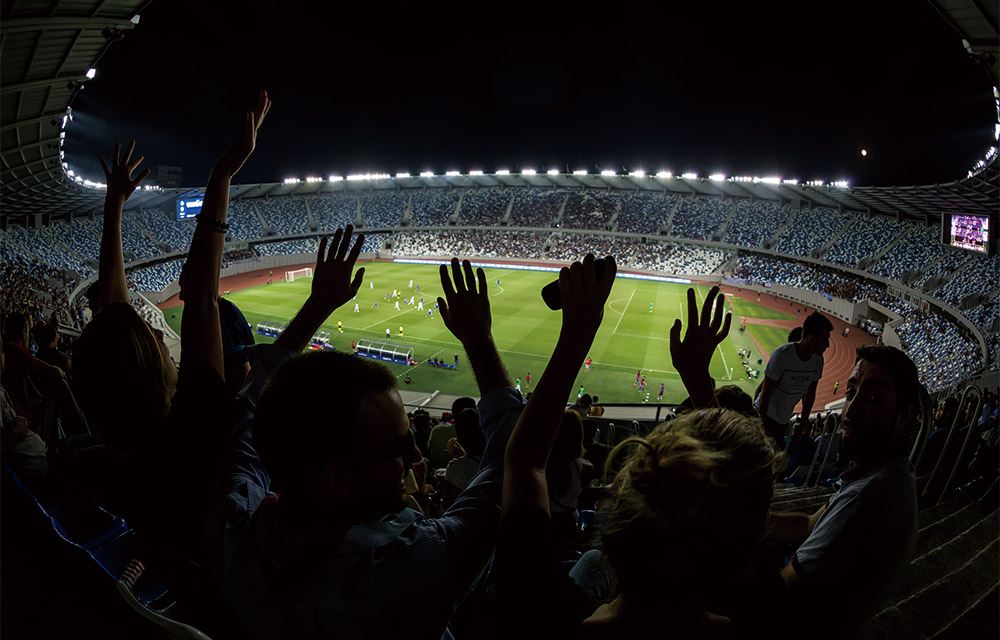 ⓒ shutterstock
ⓒ shutterstock
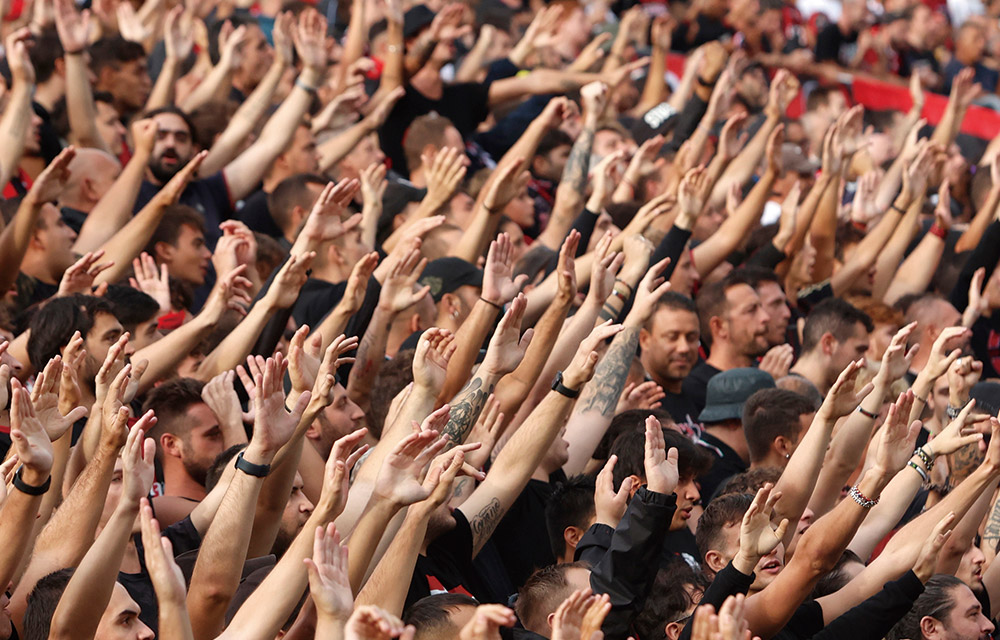 ⓒ shutterstock
ⓒ shutterstock
지난해 <모닝 컨설트>의 연구보고서는 이런 결론을 냈다. “Z세대 공략은 모든 스포츠 업계의 고위 임원들에게 최우선 과제가 돼야 한다. 팀, 리그, 미디어 회사, 연맹, 브랜드 등 어느 곳에서든 마찬가지다. 당신이 업계의 핵심 관계자라면 반드시 집중해야 할 사안이다.” 사실 이는 과소평가에 가깝다. 변화하지 않거나 ‘줌머스(Zoomers; Z세대를 일컫는 말로, 베이비붐 세대(Boomers)와 대비해 만들어졌다. 디지털 네이티브로서 Zoom 같은 비대면 플랫폼을 자주 활용하는 세대라는 뉘앙스도 담고 있다- 편집자 주)’로 불리는 소비자 그룹의 요구에 부응하지 못하는 프로스포츠 종사자들은 존재 자체가 위협받을지도 모른다.
Z세대는 이미 우리 곁에 와 있다. 그들은 전혀 다른 어휘·상징·의식·미적 감각을 지닌다. 지금까지와는 전혀 다른 집단이다. Z세대는 온라인에서든 길거리에서든 지속적으로 관찰되고 평가받는 ‘디지털 네이티브’들이다. 온·오프라인에서 정체성을 표현하려는 욕구가 무엇보다 강하다.
정체성 형성은 올바른 문화적 표현을 필요로 하는데, 스포츠만큼 풍부한 문화적 상징을 제공하는 분야는 없다. 스포츠에서는 국경 없이 공유되는 상징과 아이콘들로 넘쳐난다. 감정으로 꽉 찬 스토리들이 끊임없이 공유되는 동시에 재해석되고 각색된다. 이러한 내러티브는 사람들이 ‘나는 누구인가?’, ‘나는 무엇을 상징하는가?’, ‘남들에게 어떻게 인식되고 싶은가?’를 표현하도록 돕는다. 옥스퍼드대학교 전 마케팅 책임자인 더글라스 홀트에 따르면, Z세대는 “개인 정체성 프로젝트”로써 삶을 인식해 접근하기 때문에 자신의 모든 일상을 세상에 보여주려고 끊임없이 최적화하고 관리한다.
1997년에서 2010년 사이에 태어난 Z세대는 이미 세계 인구의 25%를 차지하며 2030년까지 12조 달러 규모의 소비력을 갖출 것으로 예상된다. Z세대는 스포츠 세상을 휩쓰는 거대한 힘으로써 스포츠가 진행되고 소비되며 즐겨지는 방식 자체를 바꾸고 있다.
스포츠를 운영하고, 참여하며, 지지하는 사람들은 이미 Z세대의 영향력을 매일 체감한다. 스포츠팀과 종목 집행부들은 새로운 역학 관계에 간신히 적응하고 있다. 미디어는 Z세대의 새로운 욕구와 소비 행태를 따라잡으려고 분주히 움직인다. 스포츠 브랜드들은 나름의 방식으로 Z세대를 마케팅 활동의 중심에 놓는다. 금융, 인프라, 지역사회의 관계자들도 새로운 요구의 함의를 이해하려고 안간힘을 쓰는 중이다.

먼저 흔한 오해부터 짚고 넘어가자. “Z세대는 운동에 관심이 없다”라는 편견이다. ‘셀카’를 찍느라 혹은 K-팝을 듣느라 바쁘다고? 전혀 그렇지 않다. Z세대는 인류 역사상 가장 다양하고, 성인지 감수성이 뛰어나며, 참여적이고 기꺼이 투자하는 스포츠 커뮤니티를 만들고 있다. 미국 컨설팅회사 <투 써클>의 조사에 따르면, Z세대는 이전 어떤 세대보다도 스포츠 콘텐츠를 많이 시청한다. 그들은 평균 4.7개 종목을 팔로우하는 것으로 나타났다. 베이비붐 세대(1946~1964년생)의 2.3개보다 두 배 이상 많다.

 출처: US consultancy <Two Circles>
출처: US consultancy <Two Circles>
카타르 월드컵은 전 세계 Z세대 인구의 약 65%를 끌어들였다. 파리올림픽의 참여율은 더 높았다. 영국에서는 Z세대의 73%가 일주일에 최소 2회 운동을 한다. ‘3차 글로벌 러닝붐’은 Z세대, 특히 젊은 여성층이 주도한다. 2026년 런던 마라톤 참가 신청에는 2년 전의 거의 두 배 달하는 110만 명 이상이 응모했으며, 그 중 3분의 1 이상이 18~29세 연령대였다.
러닝만이 아니다. Z세대는 코로나19로 인한 제약과 정신 건강 문제에 대응하는 방법으로 옥외 활동을 적극적으로 선택했다. 클라이밍, 트레일러닝, 하이킹, 수상 스포츠 참가율이 급증했다. 젊은 세대가 자연 속에서 평화와 영성을 찾으면서 나타나는 현상이다. 중국에서는 옥외 스포츠 인구가 5억 명에 달하는 것으로 추정된다.
새로운 글로벌 아웃도어 강자들이 전통적인 유럽 브랜드의 본거지 밖에서 속속 등장하고 있다. 중국의 카일라스(Kailas), 한국의 코오롱(Kolon), 스위스의 온(On), 일본의 골드윈(Goldwin) 같은 브랜드들이 Z세대 소비자의 스토리텔링, 미학, 사회적 요구를 이해하며 유럽의 기존 아웃도어 브랜드들을 위협하고 있다.
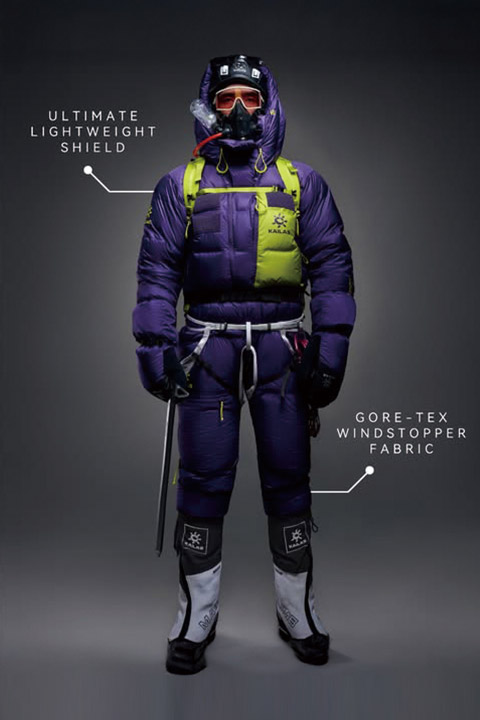 중국 아웃도어 브랜드 카일라스 © kailasglobal 인스타그램
중국 아웃도어 브랜드 카일라스 © kailasglobal 인스타그램
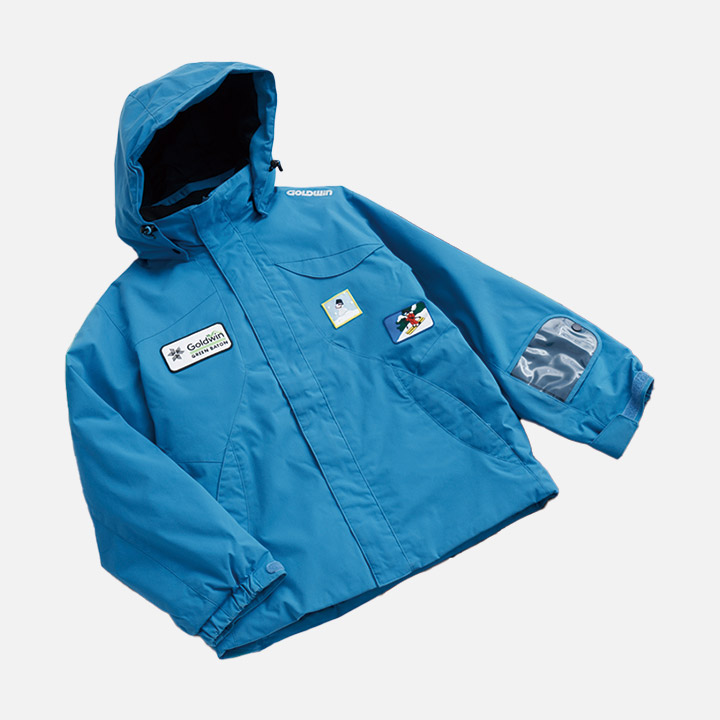 일본 아웃도어 브랜드 골드윈(Goldwin) © Goldwin 홈페이지
일본 아웃도어 브랜드 골드윈(Goldwin) © Goldwin 홈페이지
 한국 아웃도어 브랜드 코오롱 스포츠 © 코오롱 스포츠 홈페이지
한국 아웃도어 브랜드 코오롱 스포츠 © 코오롱 스포츠 홈페이지
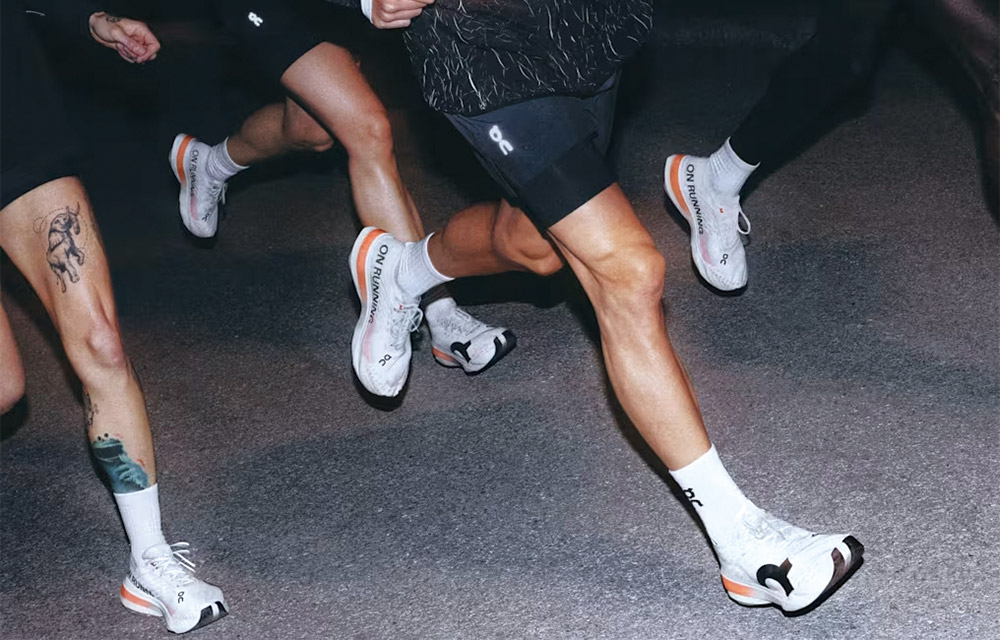 스위스 스포츠 브랜드 온(On) © On 홈페이지
스위스 스포츠 브랜드 온(On) © On 홈페이지
성공한 브랜드의 공통점은 역사, 문화, 사회를 연결할 줄 알고, 무엇보다 Z세대의 정체성 욕구를 이해한다는 것이다. ‘호라이즌 미디어 리서치’에 따르면, 18~25세의 91%가 “주류 대중문화는 이미 과거의 것”으로 여긴다. 인터넷 덕분에 어떤 마이너 취향이라도 동일 관심사를 가진 무리를 쉽게 찾을 수 있다.
스포츠 서브컬처는 Z세대에게 매력적이다. 주류와 차별화된 정체성을 부여하고 기존 규범에서 벗어나 자신을 돋보이게 하는 힘이 있기 때문이다.
따라서 스포츠 서브컬처는 Z세대의 정체성 형성에 가장 즉각적이고 강력한 도구라고 할 수 있다. 나이키, 아디다스, 언더아머 같은 스포츠웨어 대기업들은 여러 종목을 아우르는 범용성 탓에 특정 서브컬처의 진정성을 충족하기에 어려움을 겪는다. 성공하는 브랜드들은 특정 영역에 집중하고 자신을 진정한 서브컬처의 상징으로 제시한다. 이런 브랜드들은 확실한 의미를 지닌다. Z세대가 자신의 가치관과 차별성을 표현할 수 있도록 도울 뿐 아니라 소속감과 공동체 의식까지 제공한다.

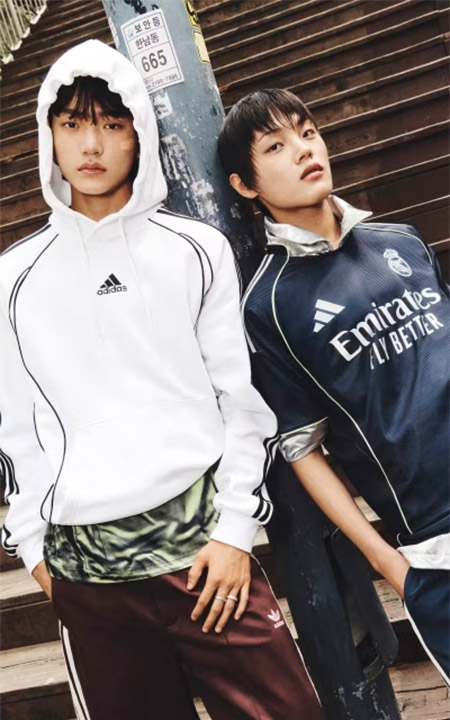

나이키, 아디다스, 언더아머 같은 스포츠웨어 대기업들은 특정 서브컬처의 진정성을 충족하기에 어려움을 겪는다. © 나이키, 아디다스, 언더아머 홈페이지
Z세대는 단순히 기능이나 기술적 우수성만을 보지 않는다. 브랜드가 누구인지, 무엇을 대변하는지, 윤리적·도덕적·영적·목적적으로 진정성 있게 참여하는지를 알고 싶어 한다. 한마디로 말해 브랜드는 자신만의 스토리를 말해야 한다. 자신을 드러내야 한다. 그리고 소비자들을 브랜드 안으로 끌어들여야 한다. 스포츠를 통해 긍정적인 변화를 일으키는 목적 안에서 ‘우리 편’을 구축해야 한다.
전 세계 주요 스포츠 리그 중에서도 NBA는 Z세대와 관계 구축에서 단연 앞서고 있다. NBA의 핵심 전략은 단순히 스포츠 리그를 넘어 문화적 동력이 되는 것이다. NBA는 단순히 농구 경기만 팔지 않는다. 그들은 가치관을 제시하고 커뮤니티를 조성한다. 다른 리그들이 중계권 판매에 집중해 B2B 중심으로 운영되는 동안, NBA는 팬과 직접 소통하면서 팬들의 삶에 강력한 존재감을 구축했다.
NBA 브랜드의 천재성은 팬과 선수 간의 장벽을 지속적으로 낮추는 능력에 있다. 비하인드신 콘텐츠와 선수의 개성을 표현할 자유를 제공해 팬들이 선수들과 직접 연결된 느낌을 받도록 한다. 팬들은 자신의 목소리가 대우받는다는 메시지를 꾸준히 듣고, 실제로 다양한 방식으로 의견을 제시할 기회를 누린다. 이런 환경 속에서 Z세대 팬은 자신도 경기의 일부라고 느낀다.
NBA의 접근법은 팬 충성도가 어린 나이에 형성된다는 이해에서 출발한다. 연구에 따르면 스포츠 팬덤의 50%는 14세 이전에 형성된다. 이에 NBA는 어린이 소셜미디어 플랫폼 지가주(Zigazoo)에 대한 대규모 투자를 포함해 소비자들이 충성도를 형성하는 시기에 이미 그들의 일상으로서 존재하려는 다양한 전략을 채택했다. “그들이 모인 곳”으로 마케팅 타킷을 만나러 간다는 목표의 일환이다.
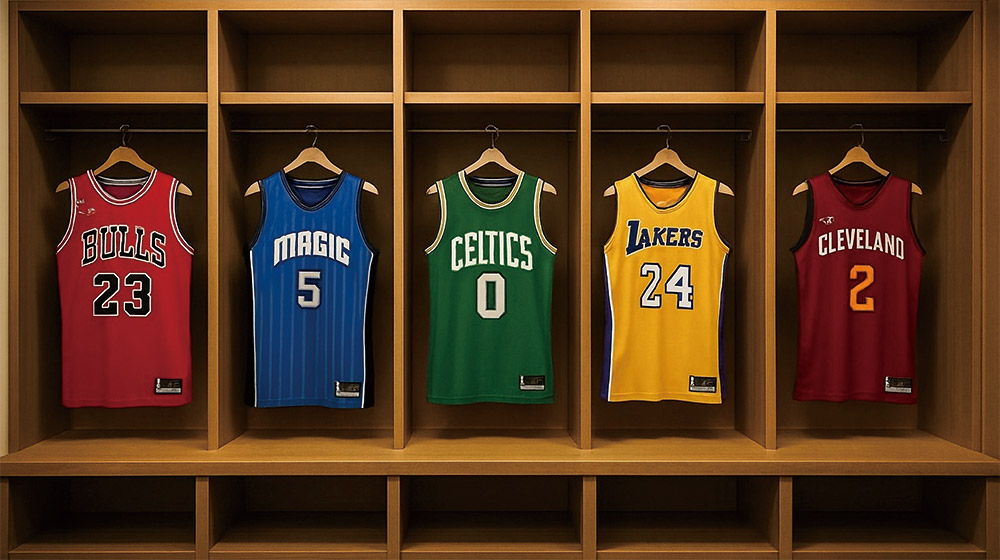 NBA 락커룸 AI 생성 이미지 © shutterstock
NBA 락커룸 AI 생성 이미지 © shutterstock
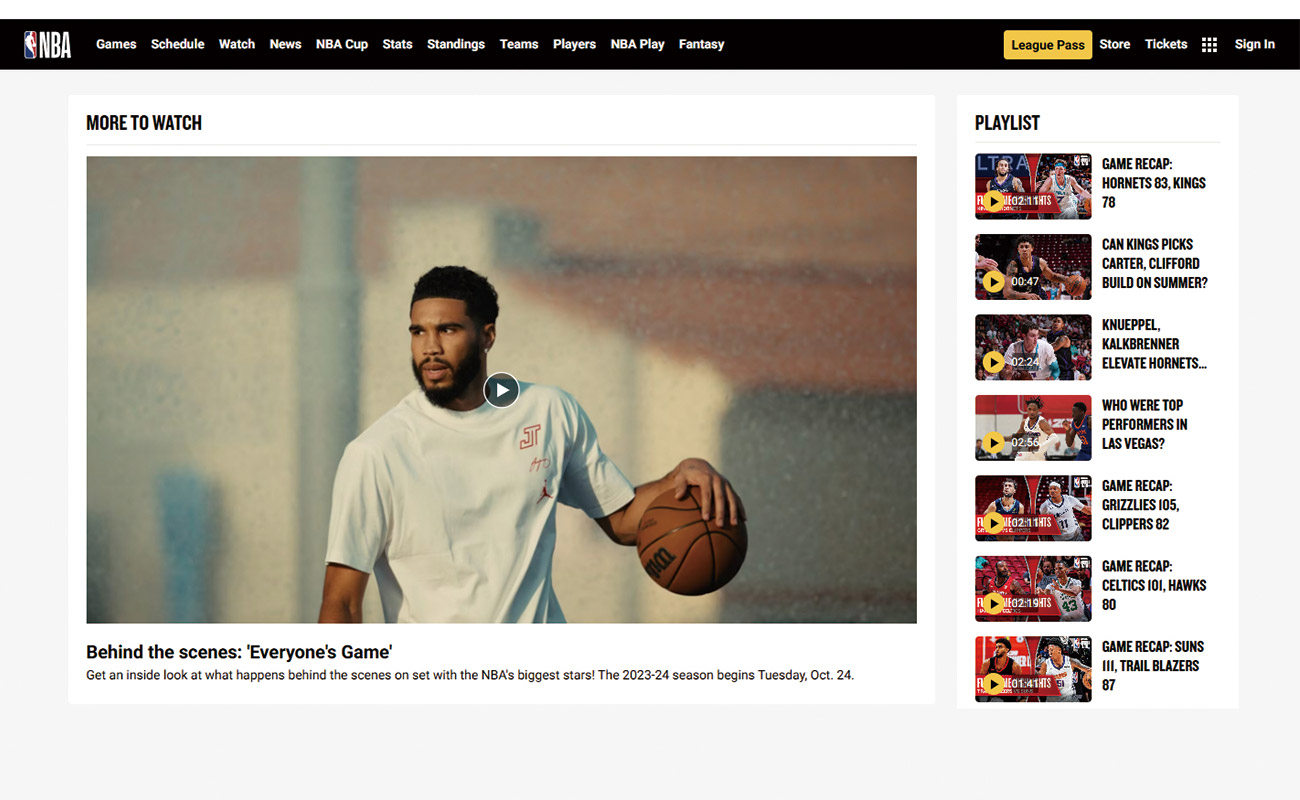 NBA Behind the scenes © NBA 홈페이지
NBA Behind the scenes © NBA 홈페이지
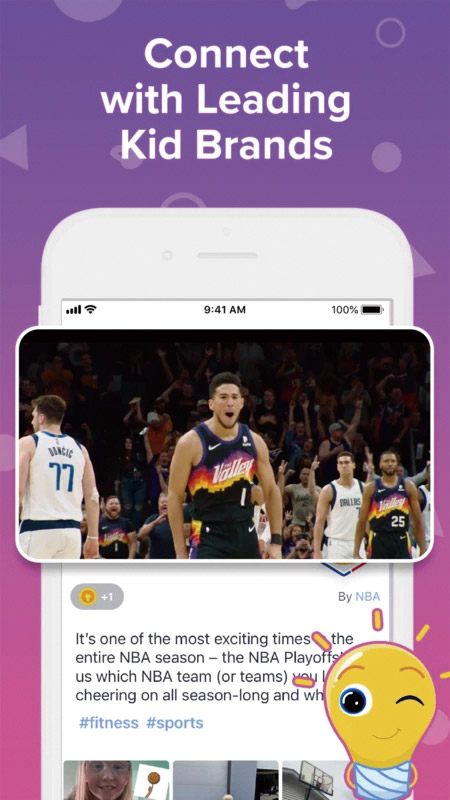 NBA 관련 콘텐츠 연동을 강조하는 지가주 앱 프로모션 이미지 © Zigazoo
NBA 관련 콘텐츠 연동을 강조하는 지가주 앱 프로모션 이미지 © Zigazoo
NBA는 브랜드의 의미를 누구보다 잘 이해한다. NBA는 자신을 역사와 사회적 역할을 지닌 문화적 힘으로 자리매김하는 데 성공했다. 카림 압둘 자바, 빌 러셀 같은 왕년의 스타부터 르브론 제임스, 스테픈 커리 같은 현재진행형 슈퍼스타까지 농구 아이콘들이 사회적 맥락에서 어떤 의미가 있는지를 보여준다. NBA는 ‘블랙 라이브스 매터(Black Lives Matter)’ 같은 사회적 이슈에 꾸준히 목소리를 내며 스포츠와 사회 모두에서 변화를 만드는 주체로 자리 잡았다.
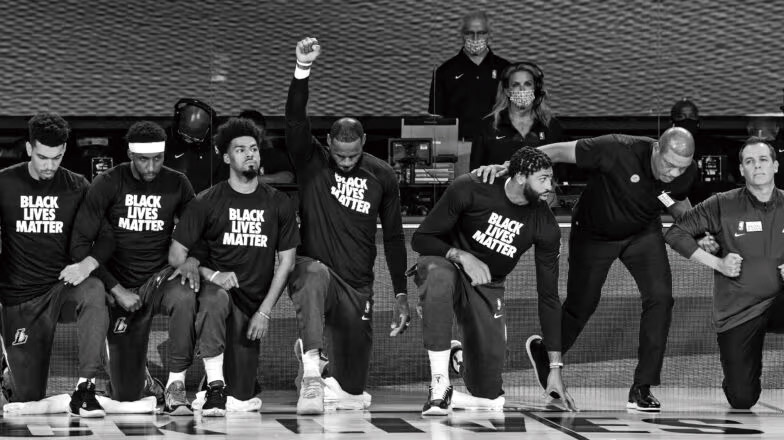 NBA는 “Black Lives Matter(흑인 생명도 소중하다)”
NBA는 “Black Lives Matter(흑인 생명도 소중하다)”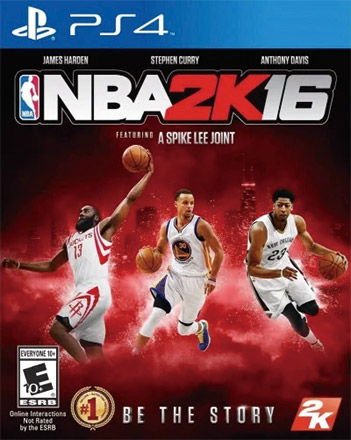 1999년 이후 개발되고 출시된 농구 시뮬레이션 게임, ‘NBA 2K’ 시리즈. © NBA 2K
1999년 이후 개발되고 출시된 농구 시뮬레이션 게임, ‘NBA 2K’ 시리즈. © NBA 2K
또한 NBA는 음악·패션·영화·기술 등 다양한 서브컬처와의 연결고리를 활용하여 Z세대가 자신들의 정체성을 더 강하게 구축할 수 있는 문화적 표현을 제공한다. 이 과정에서 NBA는 수많은 마이크로 서브컬처를 인정하고 증폭시키는 플랫폼, 즉 ‘매크로 브랜드’로 기능한다. 예를 들어, ‘NBA 2K’ 리그와 트위치·유튜브에서 활동하는 게임 스트리머와 콘텐츠 크리에이터들은 Z세대 게이머에게 거대한 커뮤니티 경험을 제공하며, 리그 정체성을 강화한다.
이 전략은 효과적이다. ‘애드에이지-해리스’의 설문 조사에 따르면, NBA는 Z세대 선호도에서 NFL을 넘어섰다. Z세대의 53%가 NBA 팬이라 답했으며, NFL 선호 비율은 49%에 그쳤다. 오랜 세월 미국 시장을 지배했던 NFL의 영향력을 생각하면 이런 결과는 의미가 매우 큰 변화라고 할 수 있다.
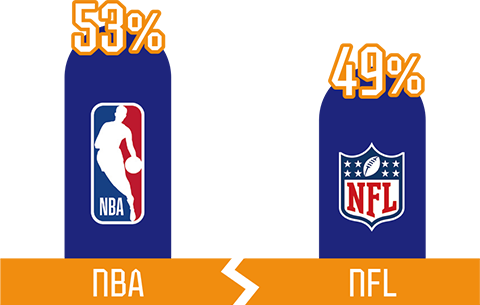 출처: AdAge-Harris poll
출처: AdAge-Harris poll
마케팅 전략의 기반으로써 소비자의 행동 데이터만 고집하는 브랜드들에게는 경고의 메시지가 있다. 세계에서 가장 성공적인 스포츠 브랜드인 나이키는 ‘브랜드 의미’ 위에서 구축됐다. 브랜드 핵심에 있는 저항 이념은 소비자들이 필드 안팎에서 나이키 제품을 착용함으로써 자신의 반항적 태도를 표현할 기회를 제공했다. 사회적으로 민감한 지점에 있는 선수 중심의 스토리텔링은 수년간 강력한 문화적 힘을 구축했다. 인종과 성별, 장애 등의 차별 문제도 과감히 수용되었다. 나이키는 사회적 장벽을 허물고 단순한 소비자 기반이 아닌 동일 이념을 공유되는 커뮤니티를 형성했다.
그런데 희대의 아이러니가 벌어졌다. 소비자 선택에서 의미를 그 어느 세대보다 갈망하는 세대가 등장했음에도, 나이키는 스토리텔링을 버리고 유사과학적인 행동 데이터 마케팅 모델을 추구한 것이다.
2019년 나이키는 이베이에서 성공적인 경력을 쌓았던 존 도나호(John Donahoe)를 최고경영자(CEO)로 영입했다. 도나호는 코로나19 팬데믹을 거치면서 온라인 커머스야말로 사업의 미래라고 판단했다. 그는 소비자를 ‘고려 주체’에서 ‘거래 주체’로 이동시켰다. 소비 행동 데이터에 기반한 거래 분석이 전면적 전략으로 채택된 것이다. 결국 소비자는 단순한 데이터 포인트로 전락했다. 퍼포먼스 마케팅, 프로그래매틱 마케팅, 디지털 퍼널, 소비자 여정 같은 디스토피아적 구조와 방법론이 전략 도구가 되었다. 브랜드는 스포츠의 손길을 상실하고 말았다. 나이키 마케터들도 ‘의미의 설계자’에서 벗어나 ‘기술 스택 관리자’로 전락하고 말았다.
도나호는 나이키를 온라인 커머스의 엔진으로 만들었지만, 그 과정에서 스포츠와 문화로서의 연결을 차단해 브랜드의 의미, 마진, 모멘텀을 모두 잃게 했다. 저항이라는 핵심 이념은 약화되었고, 나이키의 원칙은 소비주의 중심으로 재구성되었다. 이런 전략은 Z세대의 핵심 가치인 지속가능성과 진정성에 반했다. 결국 이베이 출신의 도나호 체제에서 나이키의 시가총액 4,000만 달러(약 5,000억 원)가 증발했다.
의미 있는 스토리텔링은 Z세대를 사로잡는다. 나이키는 2024년 10월 도나호를 해임하고 사내에서 잔뼈가 굵은 엘리엇 힐(Elliott Hill)을 후임 CEO로 삼아 문화적 뿌리로 회귀했다. CEO 취임 시 힐은 다음과 같이 선언했다. “우리는 우리의 강점을 극대화하지 못했다. 앞으로 우리는 스포츠를 선도하고, 모든 결정의 중심에 선수를 두겠다. 선수에 대한 깊은 통찰을 활용해 혁신, 디자인, 제품 창작, 스토리텔링을 가속화할 것이다.”
힐은 이미 영향을 미치기 시작했다. 2025년 5월, WNBA 스타 에이자 윌슨의 시그니처 슈즈는 출시 5분 만에 전량 매진되며 놀라운 성공을 거두었다. 이는 행동 데이터나 디지털 퍼널이 아니라, 선수 중심의 스토리텔링과 문화적 공명에 기반한 제품 출시의 궁극적 사례였다.
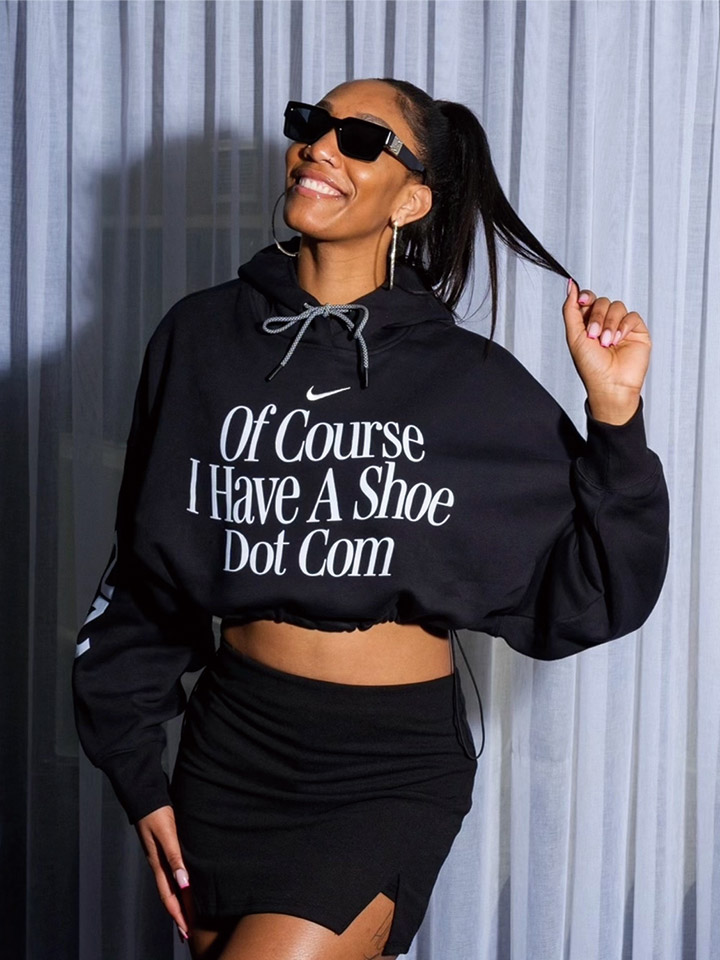 WNBA 스타 에이자 윌슨의 시그니처 슈즈 © 나이키
WNBA 스타 에이자 윌슨의 시그니처 슈즈 © 나이키
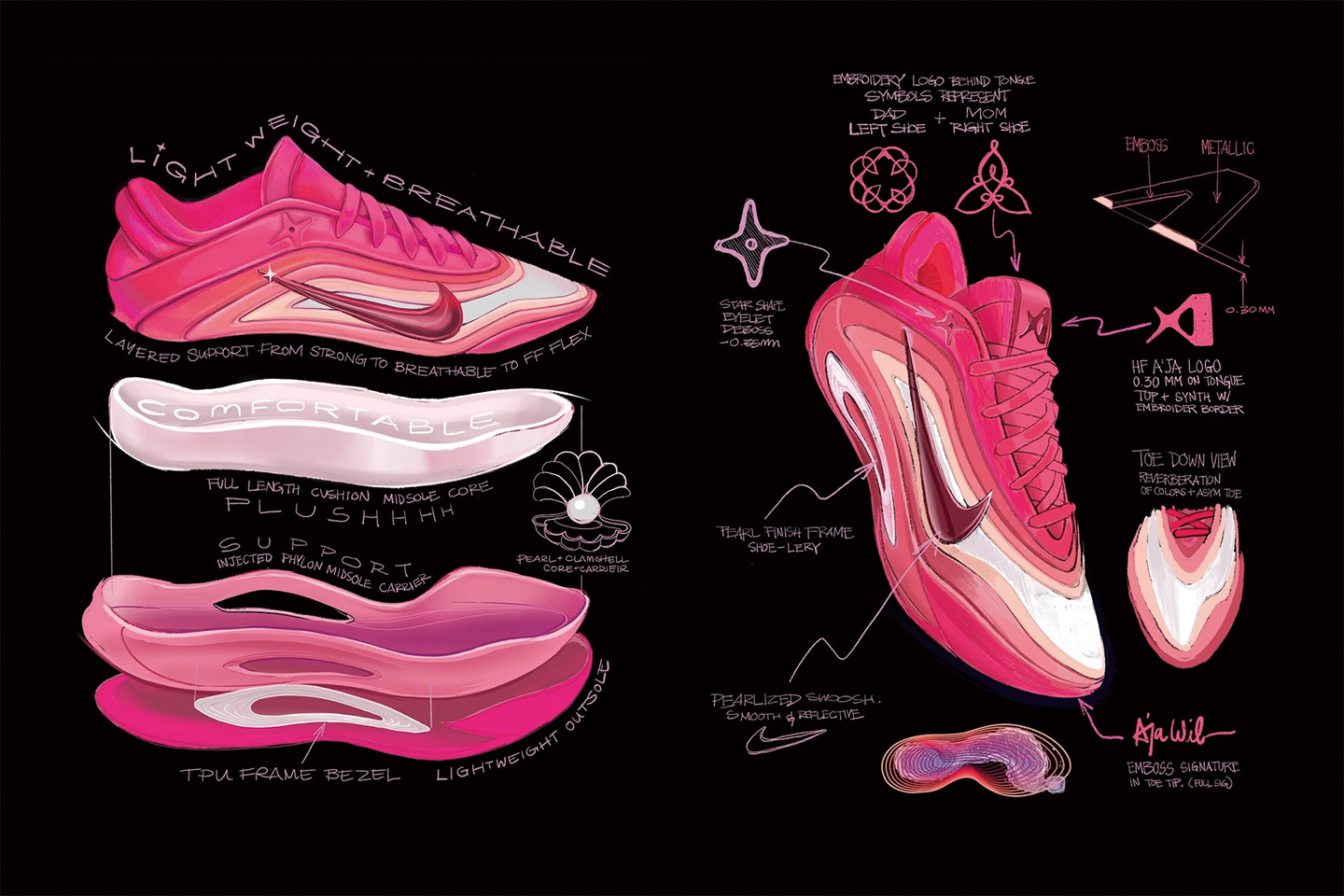 WNBA 스타 에이자 윌슨의 시그니처 슈즈 © 나이키
WNBA 스타 에이자 윌슨의 시그니처 슈즈 © 나이키
선수 중심 스토리텔링은 나이키의 유산이자 Z세대 맞춤형 전략이기도 하다. 이 신세대에게 선수는 강력한 자석과 같다. 세계 최고 인기 종목인 축구를 예로 들자. ‘우리 팀’에 집중하는 지역 팬들에 비해 글로벌 팬덤은 선수 개인에게 집중한다. 예를 들어, 크리스티아누 호날두는 잉글리시 프리미어리그 20개 클럽을 합친 것보다 더 많은 인스타그램 팔로워를 거느린다. 사우디아라비아 클럽 알나스르의 팔로워는 호날두가 합류하면서 80만 명에서 700만 명으로 폭증했다. 하지만 일본에서는 브라이튼의 윙어 미토마 카오루의 검색 수가 호날두와 메시의 합계보다 많다.
시장 조사기관 ‘닐슨’은 “몰입형 스포츠 경험의 진입점과 수동적 팬에서 열성적 팬으로의 전환은 최고 수준의 스포츠 스타를 통해 이루어진다”라고 조언한다. Z세대는 스타들의 모든 것을 알고 싶어 한다. 스타들이 어디서 쇼핑하는지, 무엇을 먹는지, 누구와 만나는지, 그리고 물론 그들의 연애사까지 관심 대상이다. OTT 플랫폼들의 선수 스토리텔링 다큐멘터리는 데이비드 베컴의 거실, 코너 맥그리거의 술자리, 에마 라두카누의 미용실 방문을 노출한다. Z세대는 초인적인 모습 뒤에 있는 스타들의 인간적이고 결함 있는 보통 사람의 이야기를 갈구한다.
이미 글로벌 현상이 된 넷플릭스의 <F1, 본능의 질주>는 시즌 6을 맞이하며 전통적인 ‘페트롤 헤드(자동차광)’ 관객을 새로운 Z세대 열성 팬으로 대체했다. 미국에서는 시즌 1 이후 18~24세 관객이 34% 증가했다. 그들은 루이스 해밀턴, 페르난도 알론소, 저우관위 같은 전형적인 스포츠 히어로의 영웅적인 모습 또는 망가지는 모습 모두에 매력을 느낀다. Z세대는 이런 콘텐츠를 탐닉하며 더 많은 것을 요구한다. ‘앰퍼 애널리시스’에 따르면, 인도 스포츠 팬의 78%가 스포츠 다큐멘터리를 정기적으로 시청하며, 중국에서도 그 수치는 75%에 달한다.
NBA는 선수를 서브컬처와 관계성 허브로 만듦으로써 선수 중심 스토리텔링을 수용했다. NBA는 선수들이 스포츠로 통하는 포털이자 다양한 서브컬처와의 진정한 연결고리라는 사실을 잘 이해한다. 제임스 하든과 러셀 웨스트브룩은 단순한 농구 스타가 아니라 패션 아이콘이다. 데미안 릴라드(Dame D.O.L.L.A.)는 진정한 뮤직 아티스트다. 리그는 이를 허용하고 장려하며, 선수들 개인 브랜드가 인접 서브컬처로의 직접적인 연결고리임을 알고 있다. 그 결과, NBA는 다른 정체성 형성 도구로의 접근까지 가능하게 한다.
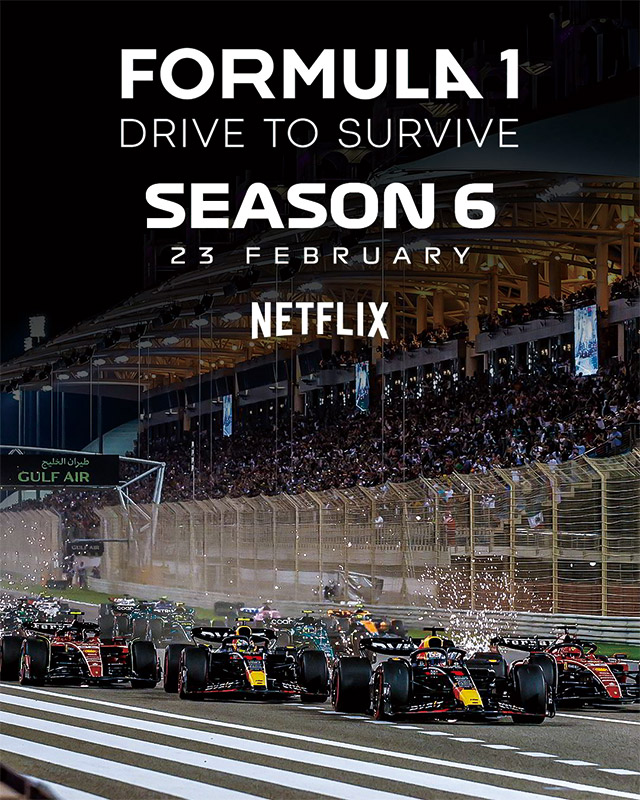 Z세대 열성 팬을 타깃으로 한 < F1, 본능의 질주> 시즌 6 © 넷플릭스
Z세대 열성 팬을 타깃으로 한 < F1, 본능의 질주> 시즌 6 © 넷플릭스
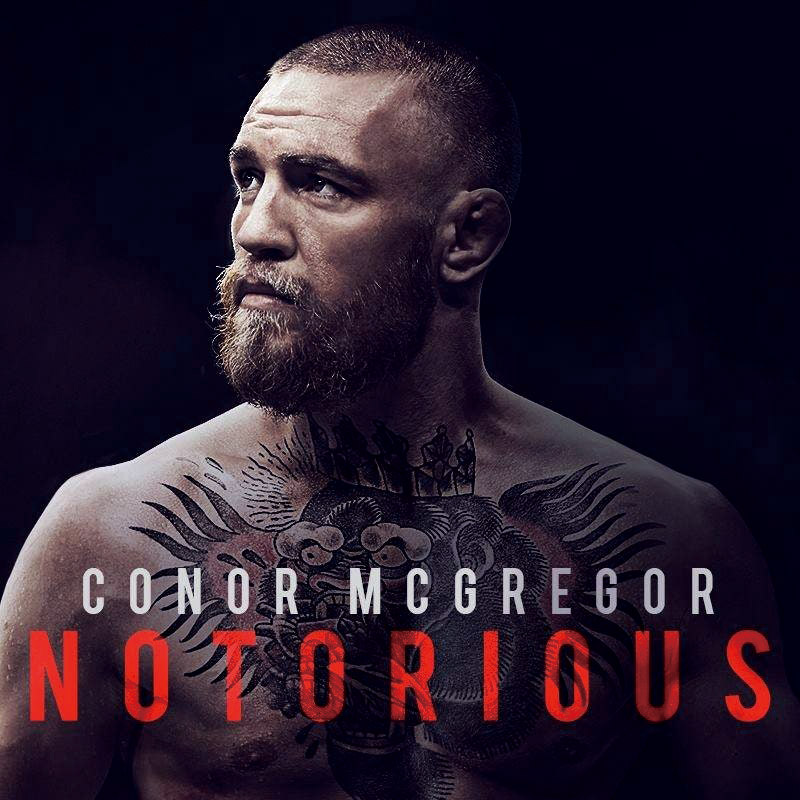 넷플릭스 다큐 <코너 맥그리거: 노토리우스> © 넷플릭스
넷플릭스 다큐 <코너 맥그리거: 노토리우스> © 넷플릭스
스포츠 브랜드 전략은 Z세대의 변화하는 소비 습관을 파악해야 한다. 그들은 모든 곳에서 참여한다. 다양한 접점을 통해 스포츠를 시청하고 팔로우하며 참여한다. 따라서 하이브리드 미디어 접근이 필요하다. 숏폼 콘텐츠는 다양한 플랫폼에서 더 많이 소비될 것으로 보인다. 물론 라이브 방송은 결정적이다. 소셜미디어도 피할 수 없다. 하지만 마케터들은 실생활 참여에 대한 수요 증가에도 주목해야 한다.
디지털 시대에서 Z세대는 갈수록 ‘비화면 경험’을 우선시한다. 기억에 남는 스토리텔링을 기반으로 한 체험 마케팅은 대면 참여에 대한 갈망을 충족할 뿐만 아니라 콘텐츠 창작의 플랫폼이 된다. Z세대는 접근성, 친밀감, 그리고 자신의 소셜미디어 채널에서 독점적 경험을 공유할 기회를 선호한다. 자신의 일상을 큐레이션하고 공유하며 지위, 지식, 목적을 보여주기에 더 좋은 방법이 있을까?
아디다스는 삼바와 가젤 같은 아이코닉한 오리지널스 스니커 라인의 전 세계 재출시 캠페인을 통해 Z세대 맞춤형 체험 마케팅을 훌륭히 실행했다. 런던, 뉴욕, 도쿄 같은 주요 글로벌 도시에서 팝업형 다감각적인 ‘오리지널스 체험’ 캠페인은 단순한 매장이 아니라 공유와 참여를 유도하는 환경으로 설계되었다. 이곳에는 방문자가 고품질 영상 콘텐츠(UGC)를 제작할 수 있는 ‘크리에이터 스튜디오’도 설치되었다. ‘소셜 리스닝 툴’의 데이터에 따르면, 캠페인 기간 중 ‘아디다스 오리지널스’에 대한 긍정적 정서와 브랜드 언급이 300% 증가했으며 오리지널스 라인의 연간 판매량은 전년 대비 15% 상승했다.
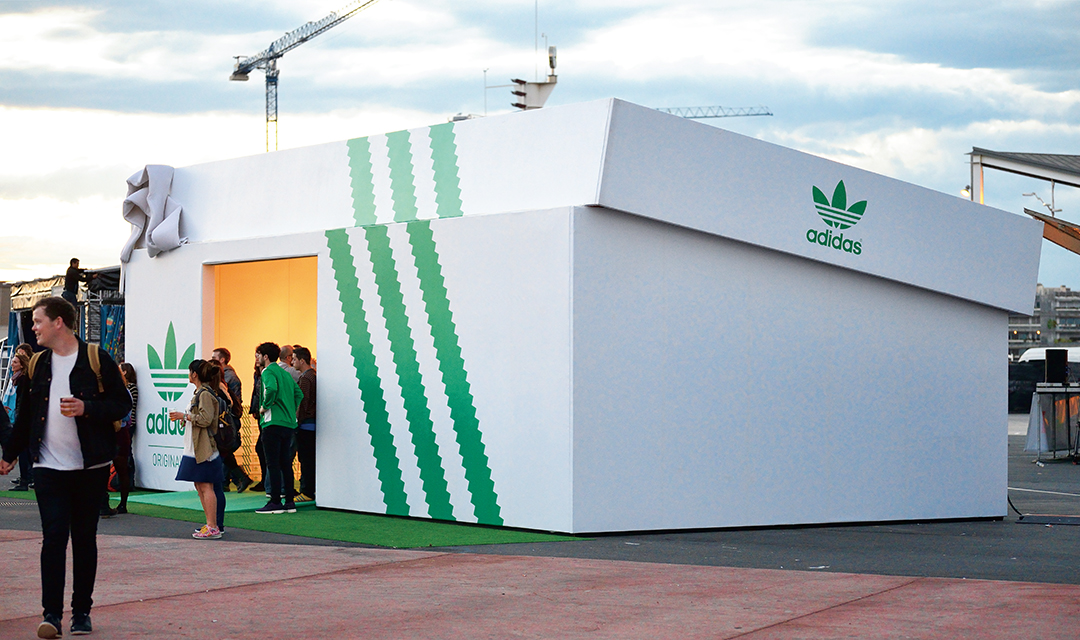 바르셀로나에 위치한 아디다스 오리지널스 스토어 © shutterstock
바르셀로나에 위치한 아디다스 오리지널스 스토어 © shutterstock
스포츠 산업 전반에 만연한 거래 중심, 행동 데이터 기반 마케팅 기술에 근본적 의문을 던질 때가 도래했다. 마케팅은 과학이 아니라 스토리텔링 예술이다. Z세대는 자신들의 “개인 정체성 프로젝트” 구축을 지지하는 스토리가 필요하다. 따라서 스포츠 업계는 소비자의 구매 행동뿐 아니라 사회적·문화적 조건을 이해하며, 브랜드 의미를 창출하고 증대하는 전략에 집중해야 한다. 브랜드는 진정성 있는 행동을 통해 스포츠를 더 나은 방향으로 이끄는 일에 헌신하고 있음을 증명해야 한다.
Z세대와 진정성 있게 연결하려면 브랜드는 그들의 문화적·사회적 환경과 더 깊은 연결성을 수용해 유의미한 관련성을 만들어야 한다. Z세대의 정체성, 진정성, 의미에 대한 요구를 받아들여야 한다. 프로스포츠 조직에 남은 최종 과제는 중계권을 핵심 상품으로 삼는 전통적 B2B 서비스 제공자처럼 생각하기를 멈추고, 팬 중심의 완전한 B2C 사고방식을 수용하는 것이다.
너무 오랫동안 스포츠 리그들은 가장 중요한 이해관계자인 팬을 부차적 관심사로써 광고주에게 판매할 데이터 포인트로만 취급했다. 그런 관계성은 거래적이었을 뿐 낭만적이지 못했다. 이제 새롭고 명확한 지침이 떨어졌다. 스포츠 자체는 포털일 뿐이다. 진정한 비즈니스는 신세대가 정체성을 표현할 수 있도록 지원하는 직접적이고 유의미한 관계를 구축하는 것이다.
이런 목표를 달성하려면 프로스포츠는 지난 한 세기 동안 구축했던 친밀감의 장벽을 정밀하게 해체해야 한다. 선수를 가리고 모든 메시지를 통제해 브랜드를 보호한다는 구시대적 사고는 이제 오히려 브랜드를 소비자들과 동떨어진 존재로 만든다.
스포츠 리그의 신규 고객은 더 이상 중계권을 구입하는 방송사나 스폰서십 기업이 아니다. Z세대 소비자들이야말로 진정한 신규 고객이다. 그들이 “개인 정체성 프로젝트”를 구축하는 데 필요한 원재료를 공급하는 것이 스포츠 업계가 해야 할 일이다. 시청률뿐 아니라 브랜드가 Z세대의 개인 서사 안에 촘촘하게 새겨지는 횟수 역시 성공을 평가하는 중요 지수가 된 세상이다.
모든 스포츠 리그는 자신들이 독점하는 미디어 권리가 최대 자산이 아니라, 결함 있고 불완전하지만 믿을 수 없을 만큼 인간적인 선수들임을 기억해야 한다. 그들은 단순한 자산이 아니라 서브 컬처를 이야기하는 메인 스토리텔러들이다. 선수들이야말로 Z세대가 연결하고 싶어 하는 의미의 전달자이자 문화 허브다.
새로운 역학에 익숙해지는 지금 이 순간에도 시계는 열심히 돌아가고 있다는 사실을 잊어선 안 된다. 다음 주자인 ‘알파 세대’가 이미 게임에 참여한 상태다. 그들의 기대치는 재차 더 깊은 의미에 대한 조정과 초점을 요구한다. 단순한 생존이 아니라 게임에서 앞서가기 위해서 변해야 할 때가 왔다.
 ⓒ shutterstock
ⓒ shutterstock